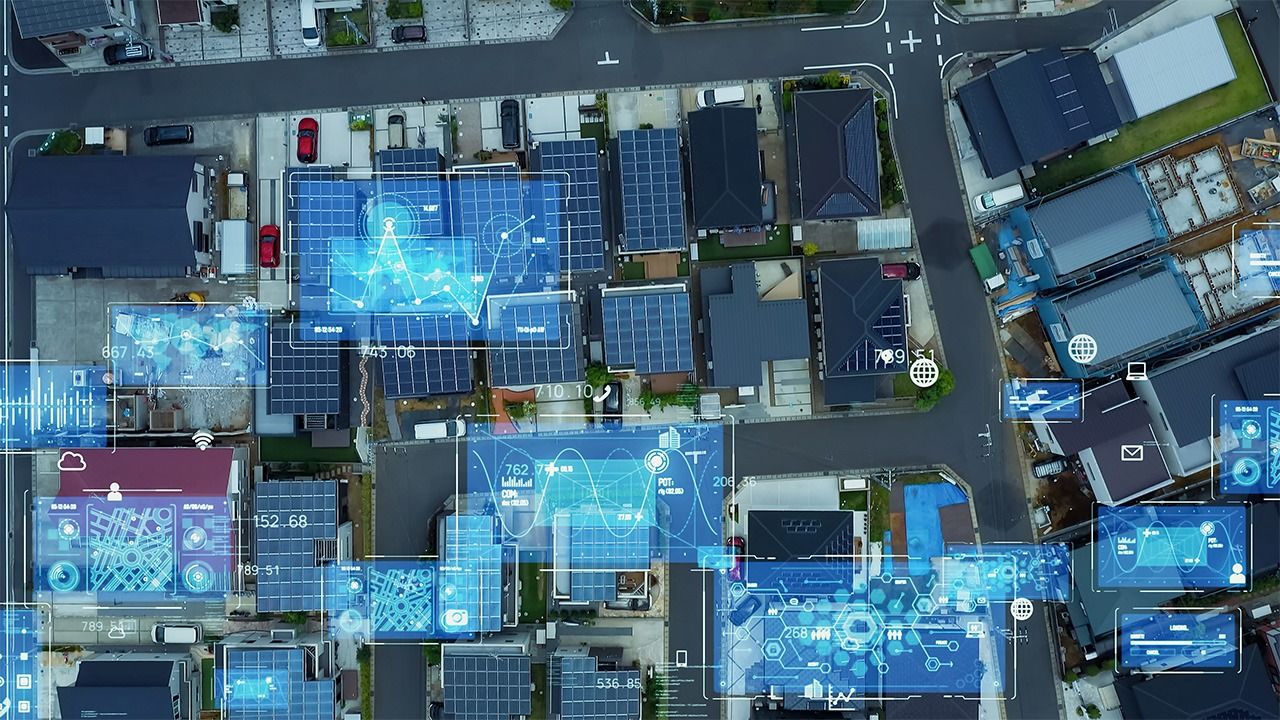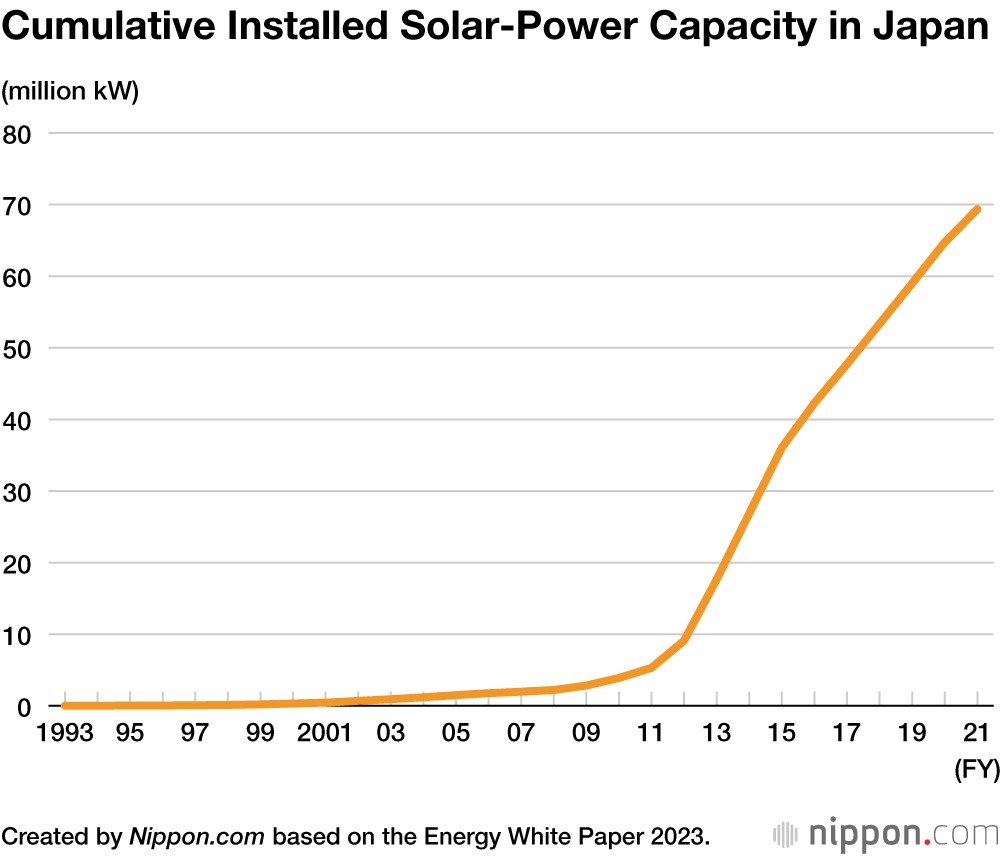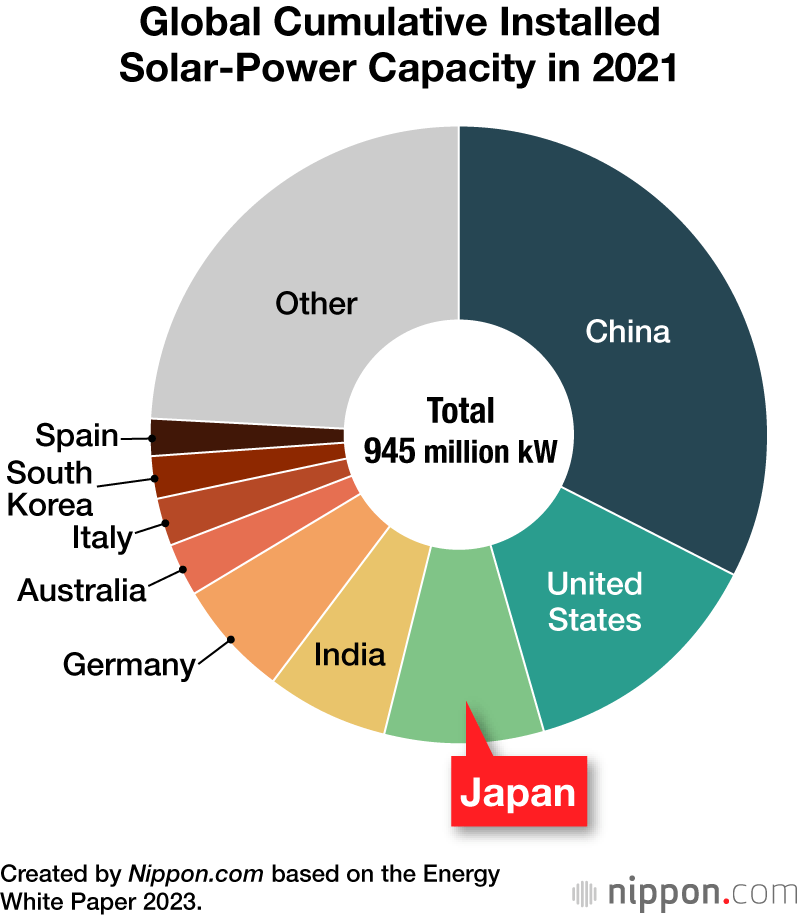
Tenfold Increase in Japan’s Solar Power Capacity over 10 Years
Economy- English
- 日本語
- 简体字
- 繁體字
- Français
- Español
- العربية
- Русский
According to the latest data released in a fiscal 2023 white paper on energy, Japan’s cumulative installed solar-power capacity was 69.35 million kilowatts in fiscal 2021. The estimated capacity was only 5 million kilowatts in fiscal 2011, but after the adoption of the “feed-in-tariff” (FIT) system the following year, residential installations as well as megasolar projects increased rapidly, leading to a more than tenfold rise over the next decade. Other factors behind the growth include the cost reductions resulting from technological improvements.
However, the pace for installing new solar-power capacity is slowing down. In fiscal 2013, just after the FIT system was introduced, the capacity nearly doubled over the previous year, but in fiscal 2021 the year-on-year increase was just 7%. The slowdown seems to be due, in part, to the reduction of the purchase price for solar power under the FIT system.
Japan ranked third worldwide in terms of its cumulative installed capacity as of the end of 2021. According to the white paper on energy, Japan ranked first until 2003, but slipped to second place behind Germany the following year. Japan regained its lead over Germany subsequently, but was overtaken in recent years by China and the United States, where solar-power capacity has been increasing rapidly.
According to the Institute for Sustainable Energy Policies, an independent Japanese nonprofit research organization, renewable energy accounted for 24% of total electricity generated in Japan in fiscal 2022, fossil fuels 70%, and nuclear power 5%.
(Translated from Japanese. Banner photo © Pixta.)

